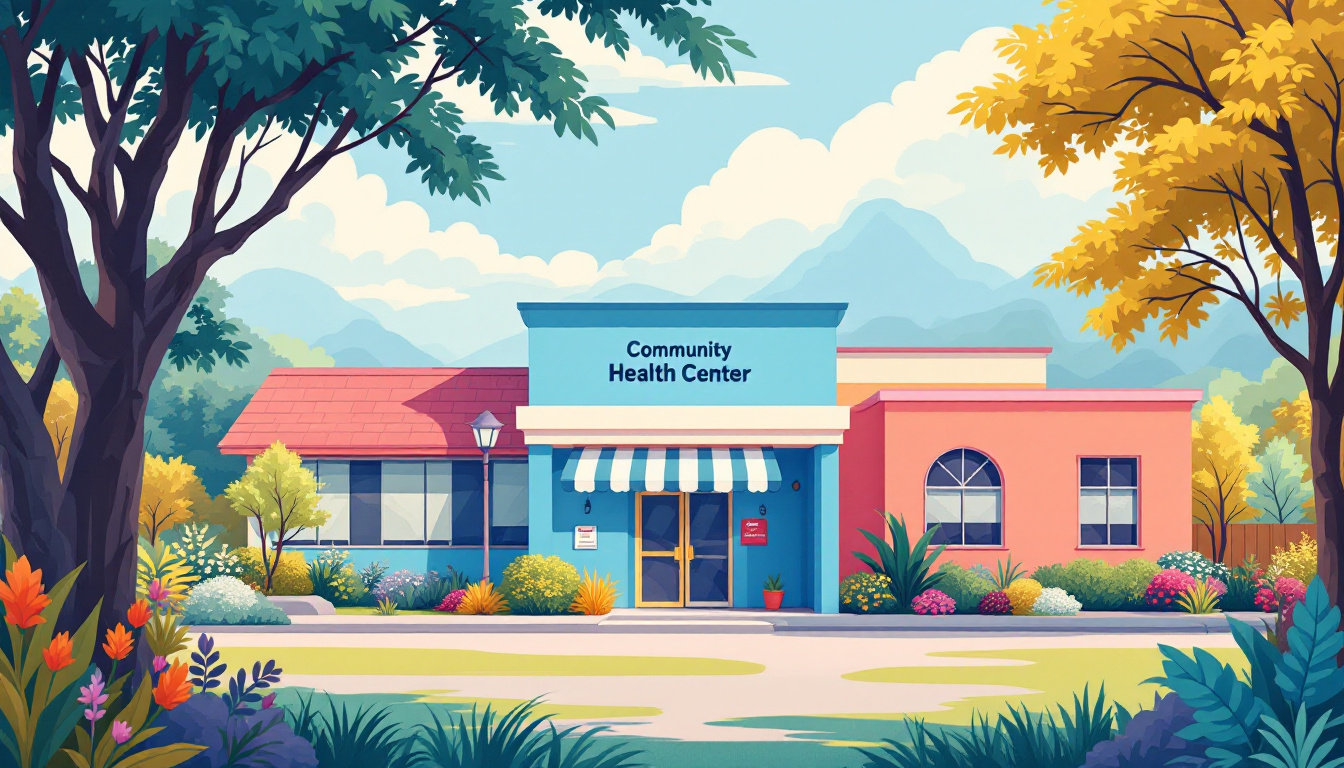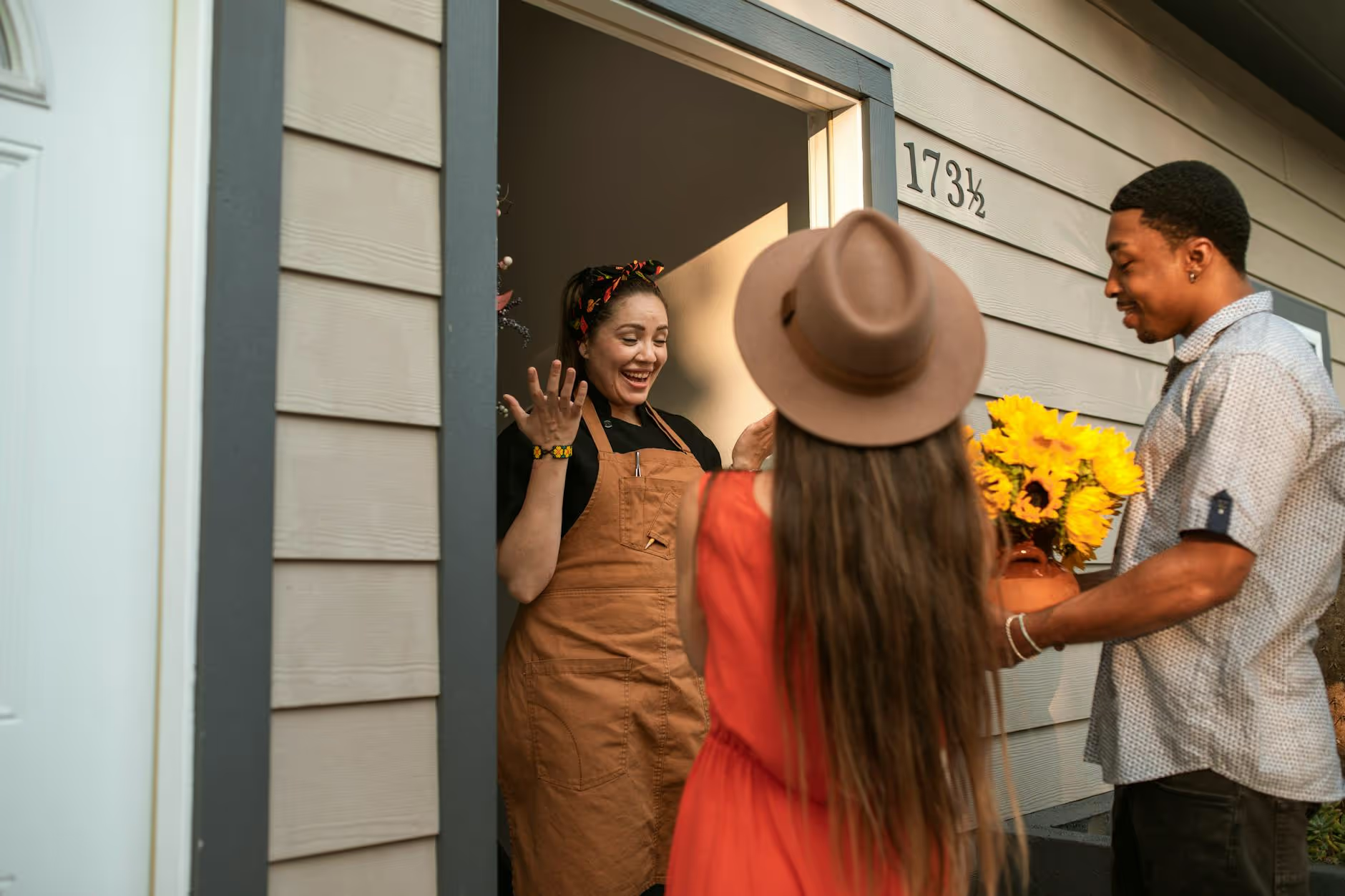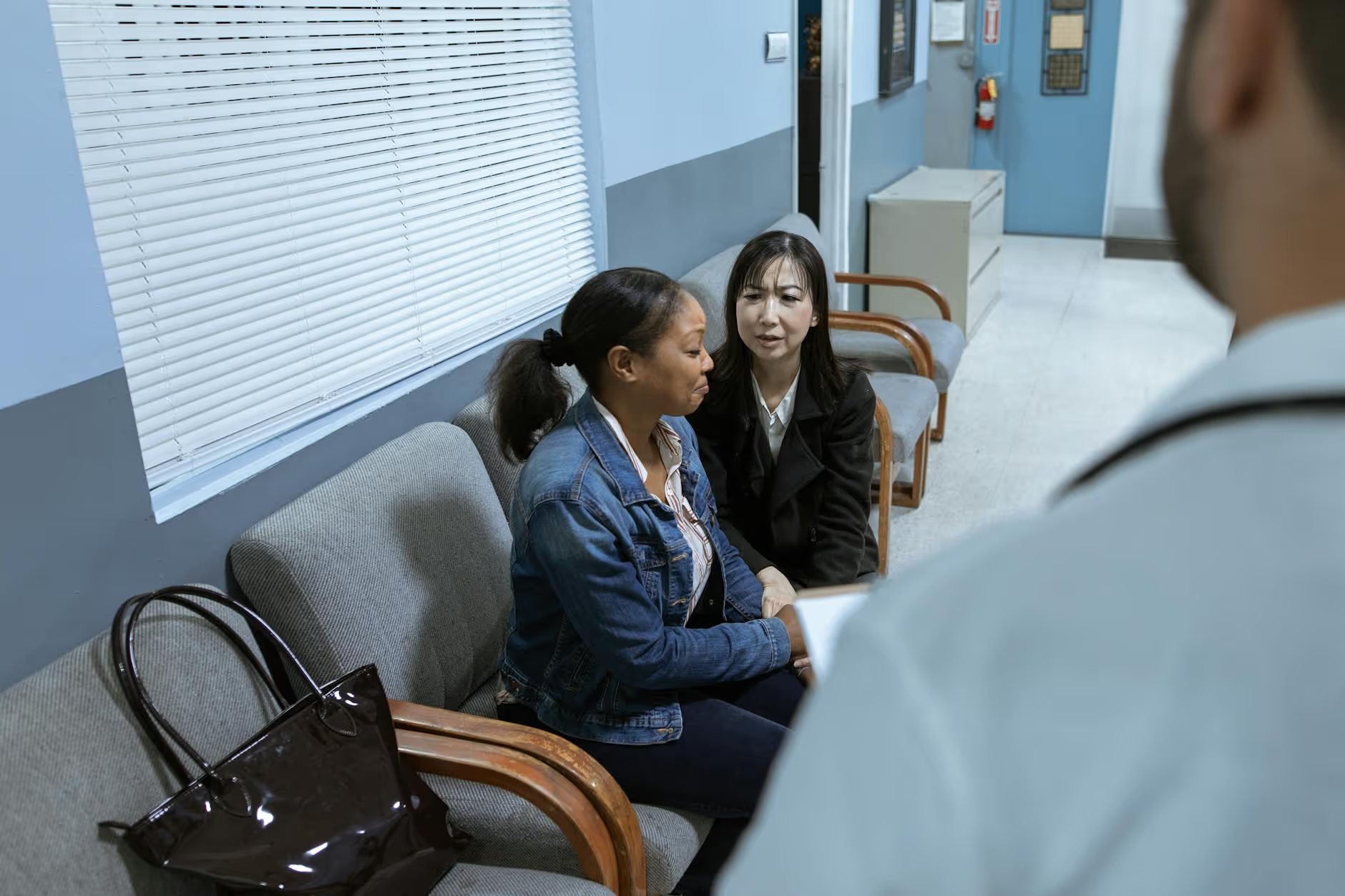Why Willows Healthcare is the Ideal Solution for Aging in Place
February 7, 2025
Willows Healthcare: Elevating the Aging in Place Experience


Introduction: The Rise of Aging in Place
Aging in place has gained significant popularity, with a vast majority of seniors showing a preference for remaining in their homes as they age. This trend underscores the importance of creating supportive environments that cater to the unique needs of older adults. Services like those offered by Willows Healthcare play a crucial role in facilitating this process, ensuring seniors receive the care and support necessary to maintain their independence and quality of life in familiar surroundings. This article explores how Willows Healthcare meets these needs and why it is considered an ideal solution for those who wish to age in place.
Understanding the Benefits of Aging in Place with Willows Healthcare

What are the advantages of aging in place?
Aging in place presents numerous advantages for older adults, primarily promoting independence and emotional well-being. A study by AARP in 2021 revealed that 77% of adults over 50 favor remaining in their own homes, highlighting a strong desire for familiarity and autonomy. By staying in a known environment, seniors can maintain their routines, feel secure, and enjoy the comforts of home.
Psychologically, this approach reduces feelings of anxiety and contributes to overall mental health, as individuals are surrounded by cherished memories and familiar settings. Furthermore, remaining at home allows for continued bonding with family and friends, essential for combating loneliness. Excitingly, programs like Lori's Hands take this a step further, connecting younger generations with older adults, fostering intergenerational relationships that benefit both communities.
The importance of maintaining social connections
Social connections are vital for anyone, particularly older adults who may face isolation. Over one-third of adults over 45 report feelings of loneliness, which can have detrimental effects on health. Aging in place supports ongoing relationships and allows individuals to engage in community activities, promoting a sense of belonging and reducing isolation. Community resources become critical in providing social interaction opportunities, helping to create a supportive environment that encourages successful aging.
It is worth noting that while home modifications may be necessary to increase safety and accessibility, only about 10% of American homes meet these aging-ready standards. Therefore, planning for such modifications and establishing necessary support services ahead of time is crucial for enhancing aging in place experiences. Ultimately, fostering a supportive environment with strong social ties not only encourages an active lifestyle but also enriches the overall quality of life for older adults.
The Importance of Healthcare for Elderly Individuals

Why is healthcare important for elderly individuals?
Healthcare plays a critical role for elderly individuals due to their heightened vulnerability to various chronic conditions such as heart disease, diabetes, and dementia. These conditions necessitate continuous management and specialized care, making access to healthcare a priority. Moreover, social determinants of health (SDOH) substantially impact the overall health and quality of life for older adults.
Role of social determinants
Factors like economic stability, community resources, and social connections directly influence their well-being. For instance, many older adults face barriers to accessing adequate healthcare, especially those in rural areas or those living in poverty. Such barriers can hinder their ability to receive necessary treatments, ultimately leading to poorer health outcomes over time.
Access to healthcare
The prevalence of social isolation among the elderly creates additional challenges. As loneliness becomes more common, especially in those over 45, it can exacerbate health issues. Therefore, focusing on healthcare access, coupled with addressing social determinants, is essential for enhancing the health and quality of life of the aging population.
| Factor | Importance | Impact on Elderly |
|---|---|---|
| Chronic Health Conditions | Require ongoing management and specialized care | Increased healthcare needs |
| Economic Stability | Ensures access to healthcare and support resources | Direct correlation with health outcomes |
| Access to Community Resources | Improves social connections and reduces isolation | Leads to better emotional and physical health |
| Social Isolation | Affects mental and physical health | Increases vulnerability to health issues |
| Quality of Healthcare Access | Influences overall health and well-being | Essential for managing chronic conditions effectively |
Services Offered by Willows Healthcare

In-home Care Services
Willows Healthcare offers a comprehensive range of in-home care services specifically designed for older adults. These services include personal care, assistance with household chores, meal preparation, and health care support. By providing these essential services directly in the comfort of the home, Willows Healthcare promotes a safer and more independent environment for seniors to age in place.
Personalized Care Plans
At Willows Healthcare, each client receives a personalized care plan tailored to their unique needs. This careful assessment and personalization ensure that older adults receive the right level of support, whether it’s short-term care for post-operative recovery or long-term assistance for ongoing health needs. This tailored approach fosters both physical comfort and psychological wellbeing by allowing seniors to stay in a familiar setting while receiving the help they require.
Supportive Resources
In addition to direct care services, Willows Healthcare also emphasizes the availability of supportive resources for older adults and their families. This includes connecting clients with community resources, facilitating social interactions to combat loneliness, and providing information about government assistance programs. These additional resources are essential for addressing both immediate and long-term needs, ensuring that seniors can navigate their aging in place journey successfully.
| Service Category | Description | Benefits |
|---|---|---|
| In-home Care Services | Personal care, household tasks, meal prep, health care support | Promotes independence and safety at home |
| Personalized Care Plans | Custom care plans tailored to individual needs | Ensures appropriate support and comfort |
| Supportive Resources | Access to community programs and assistance | Reduces loneliness and enhances quality of life |
Home Modifications and Safety Enhancements

Importance of Home Modifications
Home modifications play a crucial role in making living environments safer and more accessible for older adults. These modifications can include installing grab bars, widening doorways, adding ramps, and improving lighting. The goal is to reduce fall risks and support independence while allowing seniors to comfortably age in place.
Safety Assessments
Conducting a thorough safety assessment of the home is essential. Seniors and caregivers should look for potential hazards such as loose rugs, inadequate lighting, and cluttered walkways. By identifying these risks early on, necessary improvements can be implemented, enhancing both comfort and security. This proactive approach contributes to the overall wellbeing of older adults as they maintain their independence.
Tools for Aging Readiness
Utilizing specific tools can facilitate the aging-in-place journey. Resources such as mobility aids, smart home technologies (like voice-activated assistants), and personal emergency response systems can greatly improve safety. Additionally, community resources can provide valuable assistance, ensuring that older adults have access to the support they need to thrive in their home environment.
| Modification Type | Benefits | Example |
|---|---|---|
| Grab Bars | Prevents falls in bathrooms and stairways | Wall-mounted supports |
| Ramps | Enhances access for mobility devices | Portable or permanent ramps |
| Improved Lighting | Reduces risk of accidents | Motion sensor lights |
By focusing on these modifications and assessments, older adults can create a living space that not only prioritizes safety but also supports their desire to age in place.
Community Approach and Social Engagement

Community Resources
Aging in place often relies heavily on the availability of community resources. For 77% of adults over 50, remaining in their familiar environment not only supports independence but also fosters connections with the community. Local organizations play a crucial role in facilitating services that enhance safety and well-being for older adults. This includes everything from meal delivery programs to transportation services, allowing seniors to engage with their surroundings and each other.
Reducing Social Isolation
Social isolation is a significant challenge for older adults, with more than one-third of those over 45 experiencing feelings of loneliness. To combat this, community involvement is essential. Resources such as local support groups or social clubs encourage connections, reducing feelings of isolation. These social networks are vital for psychological well-being and help sustain health outcomes for this demographic.
Intergenerational Programs
Programs like Lori's Hands exemplify the benefits of intergenerational service learning, linking younger populations with older adults. Such initiatives provide young people with hands-on experience in healthcare while offering companionship and assistance to seniors. By creating these mutually beneficial relationships, communities can enhance aging in place experiences while addressing loneliness in older adults. This interconnectedness fosters an environment where both generations thrive, ensuring a supportive framework for successful aging at home.
Technological Innovations at Willows Healthcare
Why Do Adults Over 50 Prefer Aging in Place?
According to a 2021 AARP survey, a striking 77% of adults over 50 prefer aging in place, illustrating a deep-seated desire for independence and familiarity in their living arrangements. This trend signifies that many older adults want to continue living in their own homes rather than move to assisted living facilities, favoring a more personalized environment.
How Does Aging in Place Benefit Wellbeing?
Aging in place provides significant psychological and physical benefits. Remaining in familiar surroundings contributes to a sense of stability, which is essential for overall wellbeing. It fosters autonomy, allowing older adults to thrive in their daily routines and maintain their preferred lifestyle.
What Role Does Community and Social Support Play?
The success of aging in place is heavily influenced by social connections and community resources. A supportive environment can reduce feelings of isolation, which is prevalent among older adults; over one-third of individuals over 45 report feeling lonely. This highlights the importance of social interactions and accessible community support to combat loneliness and its associated health ramifications.
What Are the Challenges of Aging in Place?
Despite the desire to age at home, challenges remain. Safety and accessibility issues affect a vast majority of homes; currently, only 10% are deemed 'aging ready'. Many older adults may also lack the necessary social support, which could hinder their ability to live independently.
How Can Home Modifications Help?
Home modifications are integral to ensuring safety and comfort for older adults. Evaluating homes for safety hazards is vital, enabling necessary improvements to create a secure living environment. Investing in modifications can facilitate smooth aging in place, bringing peace of mind to both older adults and their families.
What Support Systems Should Be Considered?
Planning is paramount for successful aging in place. Having discussions with family and caregivers about necessary support can help adapt to changing health needs. Utilizing government assistance programs and community resources can significantly lessen the burden of costs associated with home care, often proving less expensive than moving to a specialized facility.
The Role of Education and Awareness in Aging in Place
Informed Decision Making
Understanding the dynamics of aging in place empowers older adults to make informed decisions. With 77% of adults over 50 preferring to stay in their homes, awareness of available resources and support networks is essential. Education can provide insights into home modifications and safety assessments needed for a comfortable living environment.
Caregiver Resources
Support for family caregivers is crucial in facilitating aging in place. By accessing educational programs and community resources, caregivers can learn about home health care assistance and safety improvements. Knowledge about local support services can also help alleviate feelings of isolation among older adults, which is a significant concern as one-third of adults over 45 report experiencing loneliness.
Educational Programs
Community programs like Lori's Hands provide intergenerational service learning opportunities, linking younger generations with older adults. These programs not only offer companionship but also prepare future health professionals, reinforcing the community's role in supporting aging adults. Educating both older adults and caregivers about available assistance fosters a mutually beneficial environment for successful aging in place.
Cost Considerations and Financial Planning
Affordability of aging in place
Aging in place can often be a more cost-effective option than moving to a residential facility. This approach allows older adults to remain in familiar surroundings while potentially lowering monthly expenses related to housing and care services.
Financial challenges and support
Despite the benefits, financial challenges can arise. Costs associated with home modifications for safety, healthcare assistance, and ongoing support can add up. It is crucial to plan ahead, evaluating both personal finances and potential future needs. Over one-third of adults over 45 report feelings of loneliness, which can complicate financial considerations if social connections aren't maintained.
Government assistance programs
To help mitigate expenses, government assistance programs are available. These can offer funding for home modifications and in-home care services, making aging in place more feasible. Additionally, community resources can provide support for those needing financial assistance, ensuring that older adults can remain in their homes and receive the care they need.
Comparing Aging in Place with Alternative Care Options
Benefits vs. Challenges
Aging in place offers significant advantages for older adults, as demonstrated by a 2021 AARP survey revealing that 77% prefer to stay in their own homes. This choice fosters independence and familiar surroundings, crucial for their psychological and physical wellbeing. However, challenges exist, including the lack of social support, as over one-third of adults over 45 experience loneliness, which adversely affects health outcomes.
Nursing Homes vs. Aging in Place
While nursing homes provide specialized care, they often strip away the autonomy older adults cherish. Many prefer aging at home, which benefits from home modifications that enhance safety. Unfortunately, only 10% of homes are deemed 'aging ready'. Aging in place allows for personalized care, enabling tailored solutions for tasks such as meal preparation, health assistance, and personal care, but it requires proactive planning and community support.
Independence and Control
Continuing to live at home allows older adults to maintain control over their daily lives. Discussions with family members about potential support needs are vital, as is the establishment of emergency plans. Evaluating one’s home for safety hazards is essential to ensure comfort. Lastly, combining personal funds with community resources and government assistance often makes aging in place a more affordable option compared to relocation to a residential facility.
Supporting Independence and Safety at Home
Maintaining Independence
A strong desire to age in place resonates with 77% of adults over 50, reflecting their wish to retain autonomy and familiarity in their living arrangements. Achieving this requires thoughtful planning, especially in assessing the home environment.
Safety Measures
Only 10% of homes in America are deemed 'aging ready', highlighting the critical need for modifications. Simple changes, such as installing grab bars, improving lighting, and removing tripping hazards, can significantly enhance safety for older adults. Regular evaluations of the home for potential safety issues are also essential.
Emergency Preparedness
In addition to physical modifications, creating an emergency plan is vital. This includes identifying local resources for aid, establishing communication with family members, and outlining steps to take in emergencies. Addressing these aspects not only fosters a more secure living space but also reinforces independence for older adults.
Testimonials and Recognition: Success Stories of Willows Healthcare
Client Testimonials
The positive impact of Willows Healthcare is often echoed through the testimonials of satisfied clients. Many older adults express how aging in place has enhanced their quality of life. Clients frequently mention the peace of mind and support they receive from caregivers, which allows them to maintain independence in the comforts of their own homes.
Awards and Acknowledgment
Willows Healthcare has been recognized with various awards for its commitment to providing exceptional in-home care services. These accolades highlight the organization's innovative approaches that prioritize client well-being and safety, establishing it as a trusted choice for aging in place.
Case Studies
Several case studies showcase the effective implementation of personalized care plans. One notable example details how a home modification program helped a client regain mobility after a fall, underscoring the importance of both accessibility and community support. These success stories exemplify how dedicated planning and resources contribute to successful aging in place.
Aligning with Age-Friendly Principles: Willows Healthcare's Approach
What are the 4Ms Framework?
The 4Ms framework focuses on the essentials of ensuring older adults receive appropriate and comprehensive care. It includes:
- Mind: Understanding and addressing cognitive health needs.
- Mobility: Enhancing physical mobility for independence.
- Medication: Overseeing medication management to prevent complications.
- Matters Most: Recognizing what is significant to each older adult, respecting their preferences and values.
How do Age-Friendly Care Principles Apply?
Willows Healthcare emphasizes age-friendly care principles that include:
- Respect for individual preferences: Tailoring care to align with personal needs
- Coordination of services: Linking various support systems to provide seamless care
- Accessibility: Ensuring services are easy to access within the community
What Quality Care Standards Might Be Implemented?
To uphold quality in care, Willows Healthcare adheres to standards such as:
| Standard | Description | Implementation |
|---|---|---|
| Safety | Providing a safe environment, free of hazards | Regular home evaluations |
| Compassionate Care | Prioritizing empathy and human connection in interactions | Staff training workshops |
| Community Engagement | Involving community in care plans to reduce isolation | Intergenerational programs |
Integrating these principles ensures that older adults receive the finest care while aging in place.
Conclusion: Choosing Willows Healthcare for Aging in Place
Aging in place is a preferred choice for many older adults, promising comfort, autonomy, and continued connection to their communities. Willows Healthcare stands out as an ideal partner for those looking to achieve successful aging in place by offering comprehensive services that cater to the diverse needs of seniors. With an emphasis on safety, innovation, community integration, and quality care, Willows Healthcare ensures that seniors can enjoy their later years with dignity and peace of mind. This makes it not just a solution, but a movement toward a future where aging in place is accessible and effective for all older adults.
References
- Aging in Place: Are We Prepared? - PMC - PubMed Central
- Aging in Place: Growing Older at Home
- What is Aging in Place? Pros and Cons of Aging in Place
- Retirement Life Resources - Lifestyle Tips & Advice
- Pros and Cons of Aging in Place - Acts Retirement-Life Communities
- Social Determinants of Health and Older Adults | odphp.health.gov
- Healthy Aging Resources | odphp.health.gov
- Check Out Our New Resource on Social Determinants of Health and ...
- Resources and Support for Older Adults Living Alone

























































































.jpeg)











































































































































































































.avif)























































.jpeg)

































































.jpeg)














.jpg)









































.jpeg)









































































.avif)




.avif)

















































.avif)








































































































































































